Allopurinol Drug Overview
Allopurinol is a xanthine oxidase inhibitor used primarily to treat hyperuricemia and its complications, including chronic gout. It prevents the production of uric acid by inhibiting the enzyme responsible for its synthesis, thereby reducing the concentrations of uric acid in the body.
Pharmacological Classification
Allopurinol is classified as a purine analog and hypouricemic agent. It is chemically known as 1,5-dihydro-4H-pyrazolo[3,4-d]pyrimidin-4-one.
Indications for Use
Indications for allopurinol usage include the management of primary or secondary gout, prevention of recurrent uric acid kidney stones, and the treatment of hyperuricemia associated with malignancy or certain enzyme disorders, such as Lesch-Nyhan syndrome.
Available Dosage Forms
Allopurinol is available in several dosage forms, including oral tablets (commonly 100 mg and 300 mg strengths) and an intravenous formulation for use in settings where oral therapy is not feasible.
Dosing and Administration
Initial dosing for adults typically starts at 100 mg daily and may be titrated up based on serum urate levels and patient response. Maintenance dosage usually ranges from 200 to 600 mg daily. In patients with impaired renal function, the dosage must be adjusted to avoid accumulation of the drug. Allopurinol is taken orally, usually once a day after a meal to minimize gastrointestinal discomfort.
Drug Mechanism of Action
Allopurinol and its primary active metabolite, oxypurinol, work by inhibiting xanthine oxidase. This enzyme is responsible for the conversion of hypoxanthine to xanthine and xanthine to uric acid, which is the final step in purine catabolism. Inhibition reduces the production of uric acid and promotes the conversion of hypoxanthine and xanthine to more soluble compounds that are easily excreted.
Pharmacodynamics and Kinetics
After oral administration, allopurinol is well absorbed from the gastrointestinal tract. Its peak plasma levels are generally achieved within 1.5 hours. It is metabolized to oxypurinol, which also has xanthine oxidase inhibitory activity. Both parent drug and metabolite are excreted primarily by the kidneys. The elimination half-life of allopurinol is approximately 1 to 2 hours and for oxypurinol, around 15 hours.
Drug Interactions
Allopurinol can interact with several medications. It may increase the risk of rash when used with ampicillin or amoxicillin. It can also enhance the effects of oral anticoagulants, necessitating careful monitoring of prothrombin time. Concomitant use with azathioprine or mercaptopurine should be avoided or carefully managed as allopurinol can increase their toxicity by inhibiting their metabolism.
Contraindications and Cautions
Allopurinol is contraindicated in individuals who have shown hypersensitivity to allopurinol or any of its components. Caution is advised when using allopurinol in patients with impaired renal or hepatic function and those concurrently taking drugs with potential for interaction.
Adverse Reactions and Side Effects
Common side effects of allopurinol include gastrointestinal disturbances such as nausea and diarrhea, as well as rash. Rare but serious side effects include severe hypersensitivity reactions, liver enzyme abnormalities, and acute renal failure, especially in patients with pre-existing kidney disease.
Special Populations Considerations
Dosage adjustment is needed for patients with renal impairment to reduce the risk of toxicity. Caution is advised in elderly patients, who may have decreased renal function. The safety and effectiveness of allopurinol in pediatric populations for conditions other than malignancy-induced hyperuricemia and certain enzyme disorders have not been established. Pregnant and lactating women should use allopurinol only if the potential benefits justify the potential risk to the fetus or infant.
Monitoring Parameters
Regular monitoring of serum uric acid levels is essential to ensure therapeutic effectiveness and to adjust allopurinol dosing appropriately. Renal function should be assessed periodically, particularly in patients with known renal insufficiency. Liver function tests are recommended periodically due to potential hepatotoxic effects of allopurinol.
Overdose Management
In cases of suspected overdose, supportive treatment should be initiated, which may include hydration to promote renal excretion of the drug. Hemodialysis may be effective in enhancing the elimination of allopurinol and its metabolites. Due to the drug’s short plasma half-life, removal of unmetabolized allopurinol and allantoin, the product of its metabolic activity, can be beneficial.
Patient Counseling Information
Patients should be informed that allopurinol requires strict adherence to dosing schedules and regular monitoring. They should be advised to maintain adequate hydration to prevent kidney stone formation and to report any signs of hypersensitivity, such as rash or fever, immediately. Additionally, patients should be counseled to avoid concomitant use of alcohol and to report any new medication they start, including over-the-counter drugs and supplements, to manage possible drug interactions effectively.

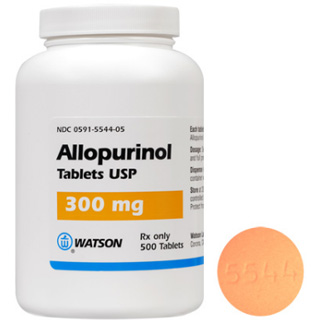
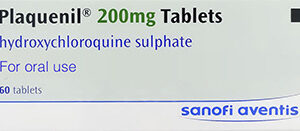
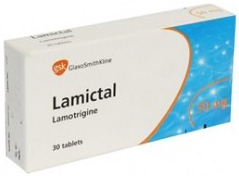
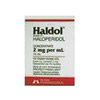

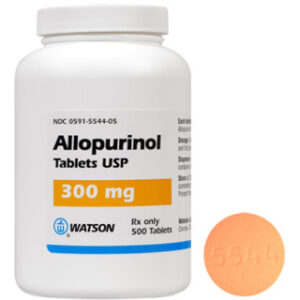
Reviews
There are no reviews yet.